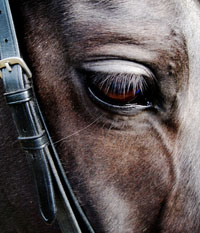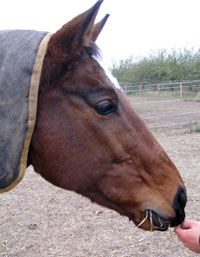Alsike clover - Trifolium hybridum
Not all clovers are poisonous to horses but the Alsike Clover, Trifolium hybridum, is toxic and can prove fatal.
Alsike clover grows very tall, 38cms - 76 cms (15-30 inches) in height with a small 1.3 cms (½-inch) diameter pink flower, which forms at the ends of secondary branches from the main stem. The non-toxic white clover is low growing and grows from a creeping stem, leaves and flowers rise individually from the horizontal stem.
The entire Alsike clover plant is toxic, both in its fresh and dried state, care must be taken that Alsike clover is not present in hay or haylage.
Alsike clover is know to cause two syndromes, photosensitization and big liver syndrome. Horses show the photosensitization syndrome with short-term exposure, while liver damage and enlargement is usually associated with long-term exposure.
Symptoms of photosensitization:
- Lining of eyelids, or conjunctiva, become red and swollen
- Inflammation and lesions of the muzzle, mouth, tongue, eyes, eyelids, and ears, with discharge from the lesions.
Symptoms of" big liver" disease:
- Jaundice
- Nervousness
- Digestive disorders; "off feed"
- Brownish urine
- Clay-coloured faeces
- Neurological signs - walking in circles, disoriented, and head-pressing, among others.
Alsike clover poisoning can result in death.
Urgent veterinary assistance is required.
(Image source: http://en.wikipedia.org/wiki/File:Trifolium_hybridum01.jpg)




